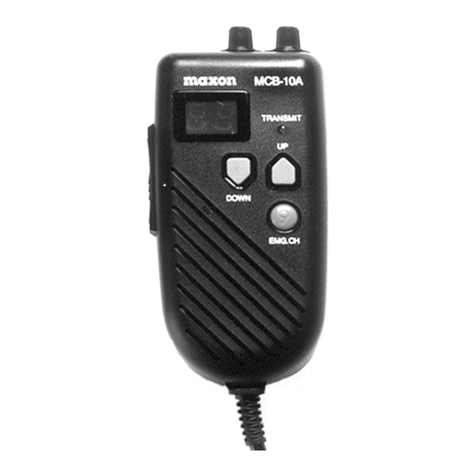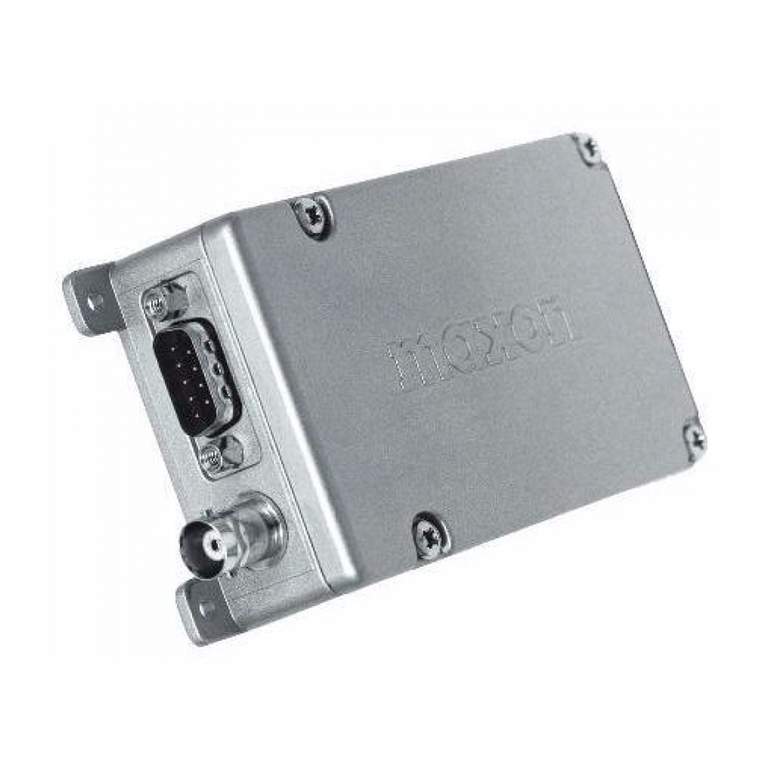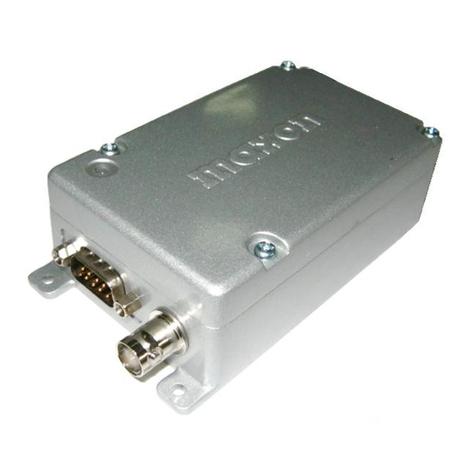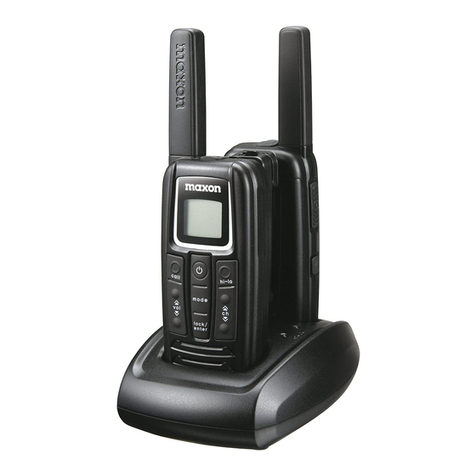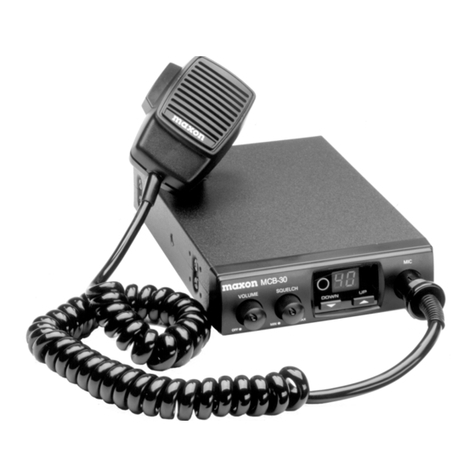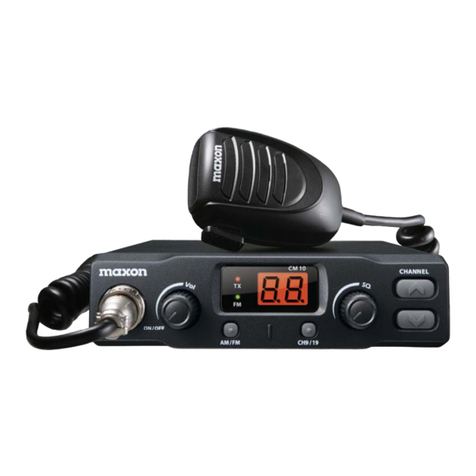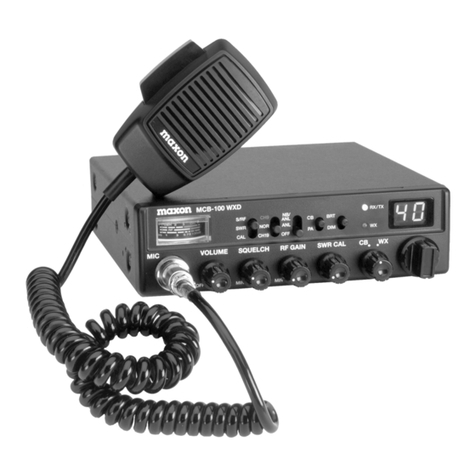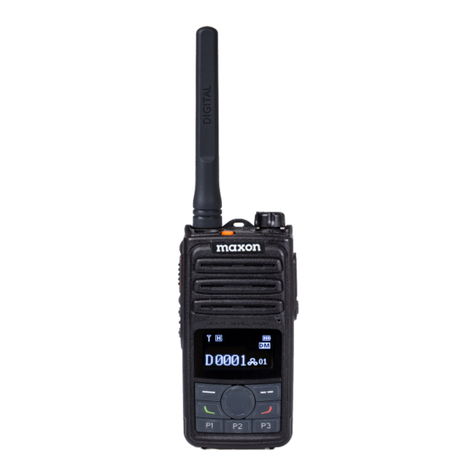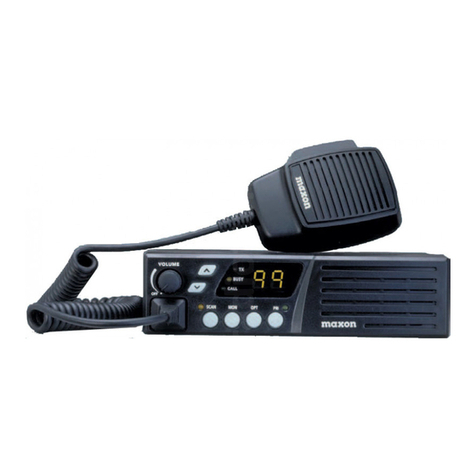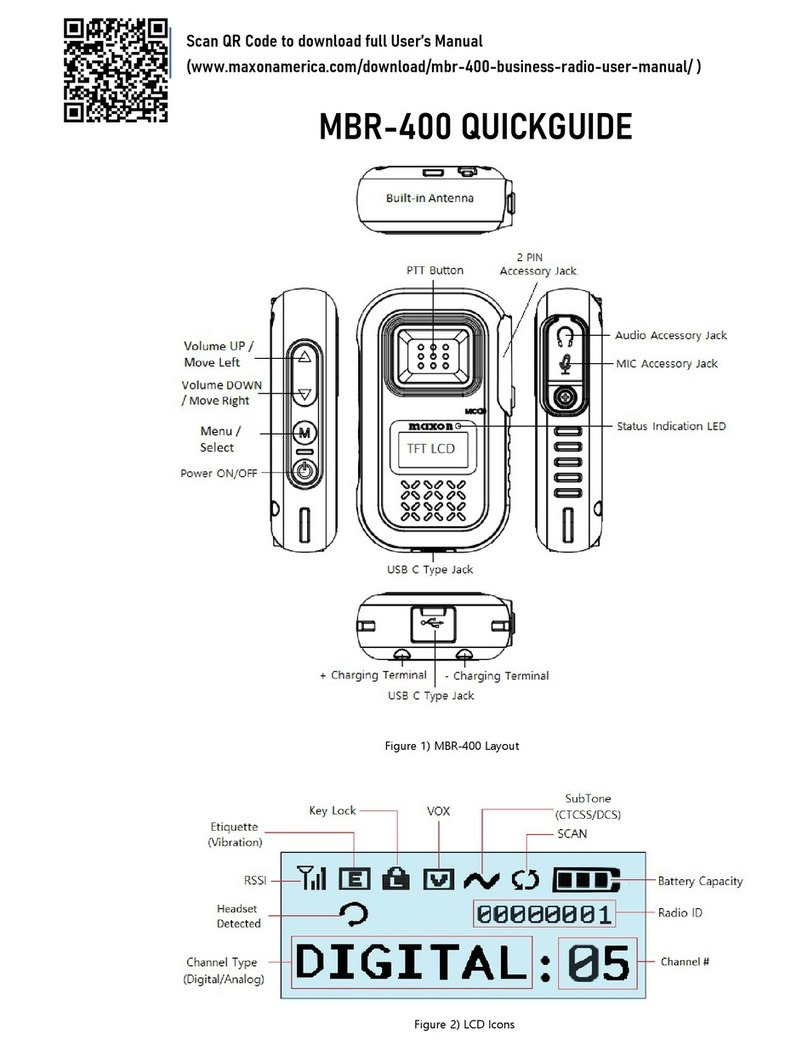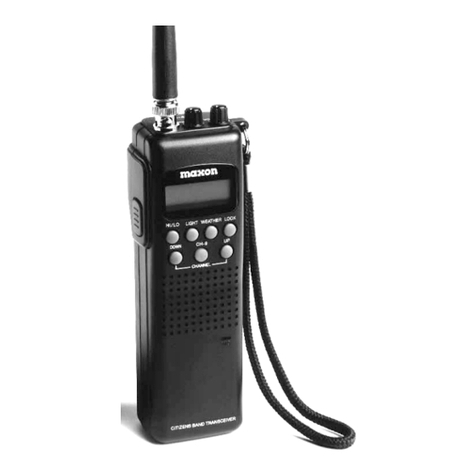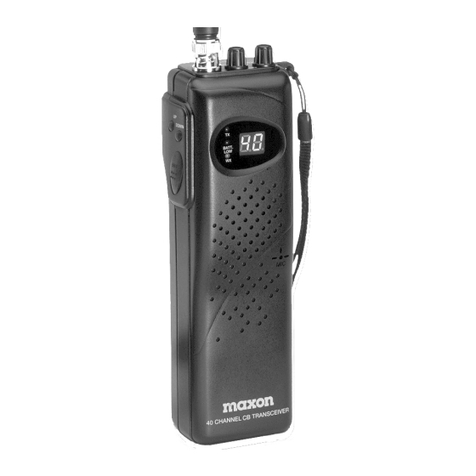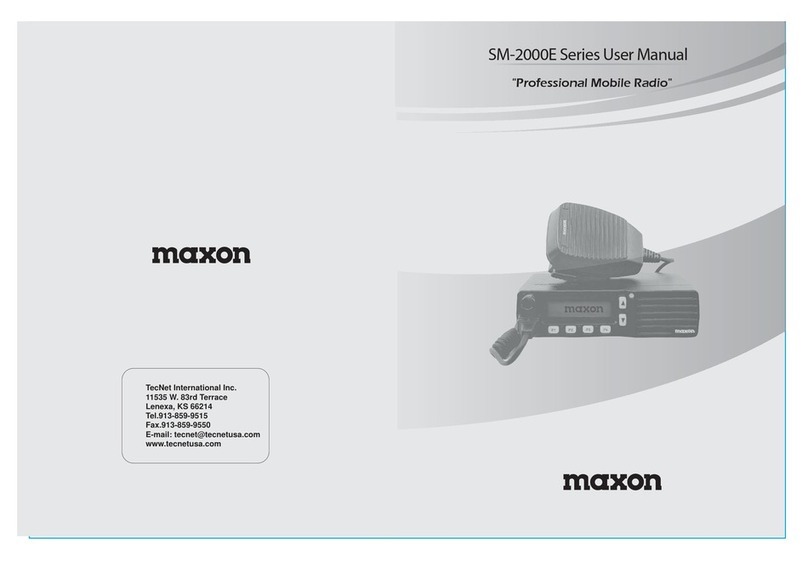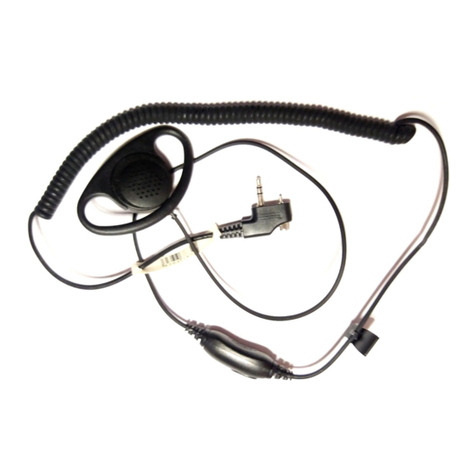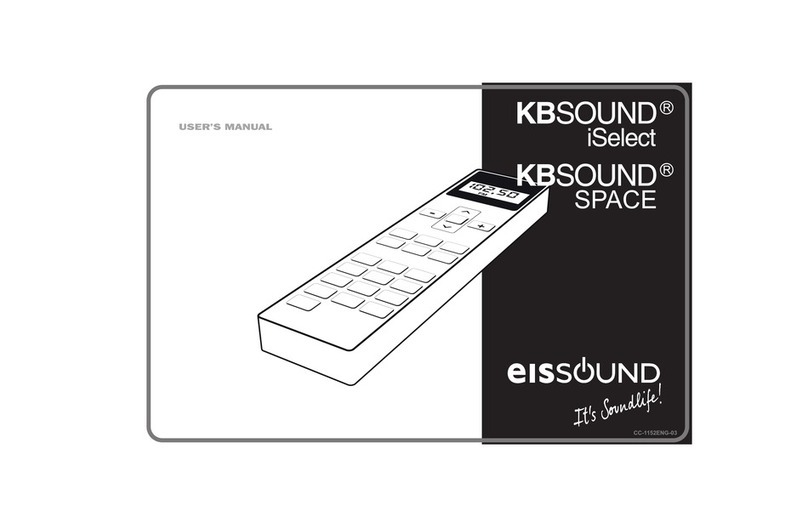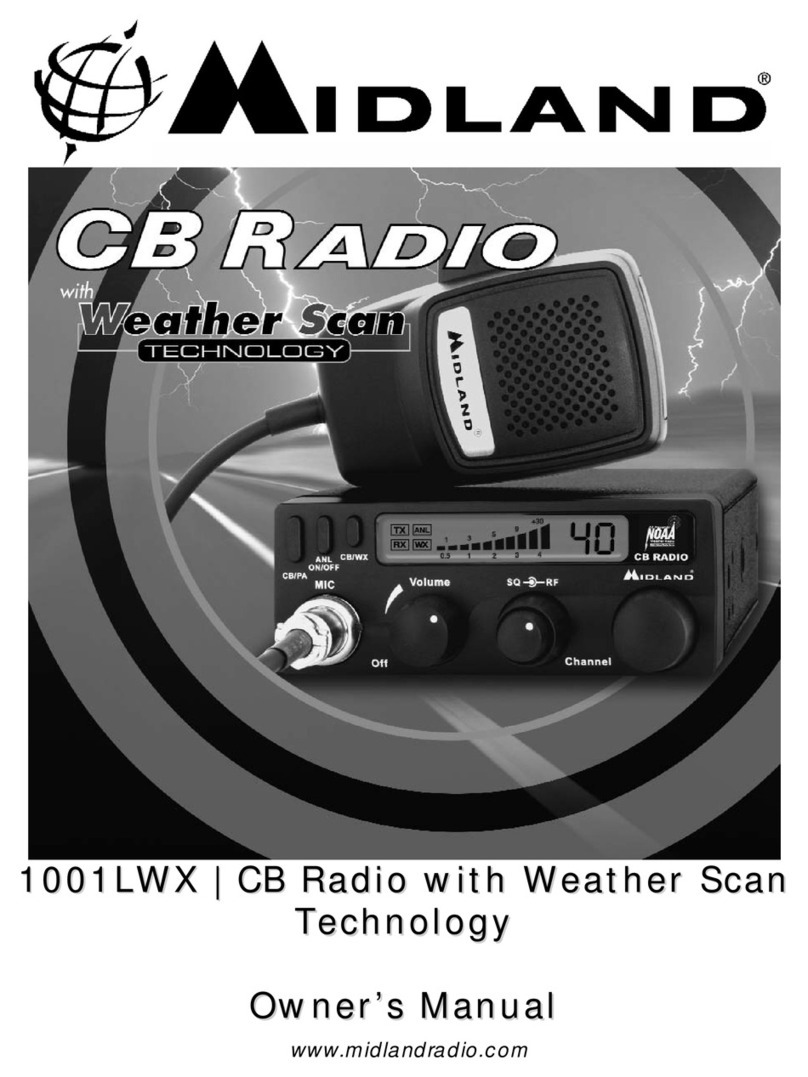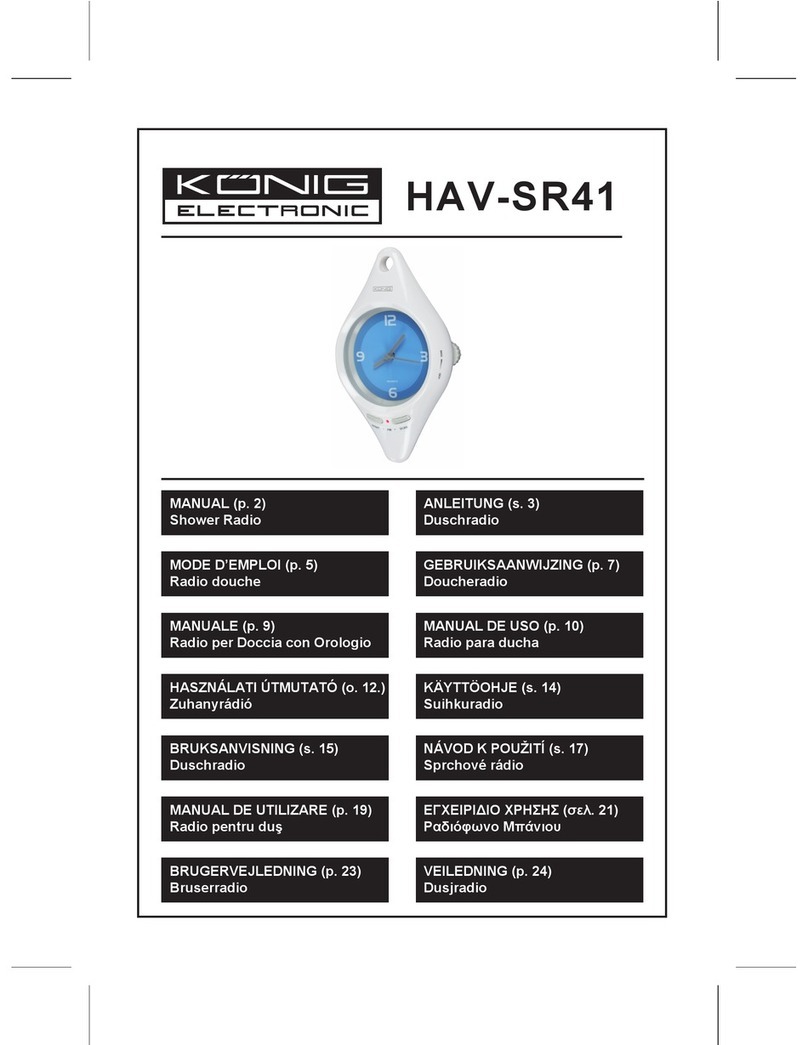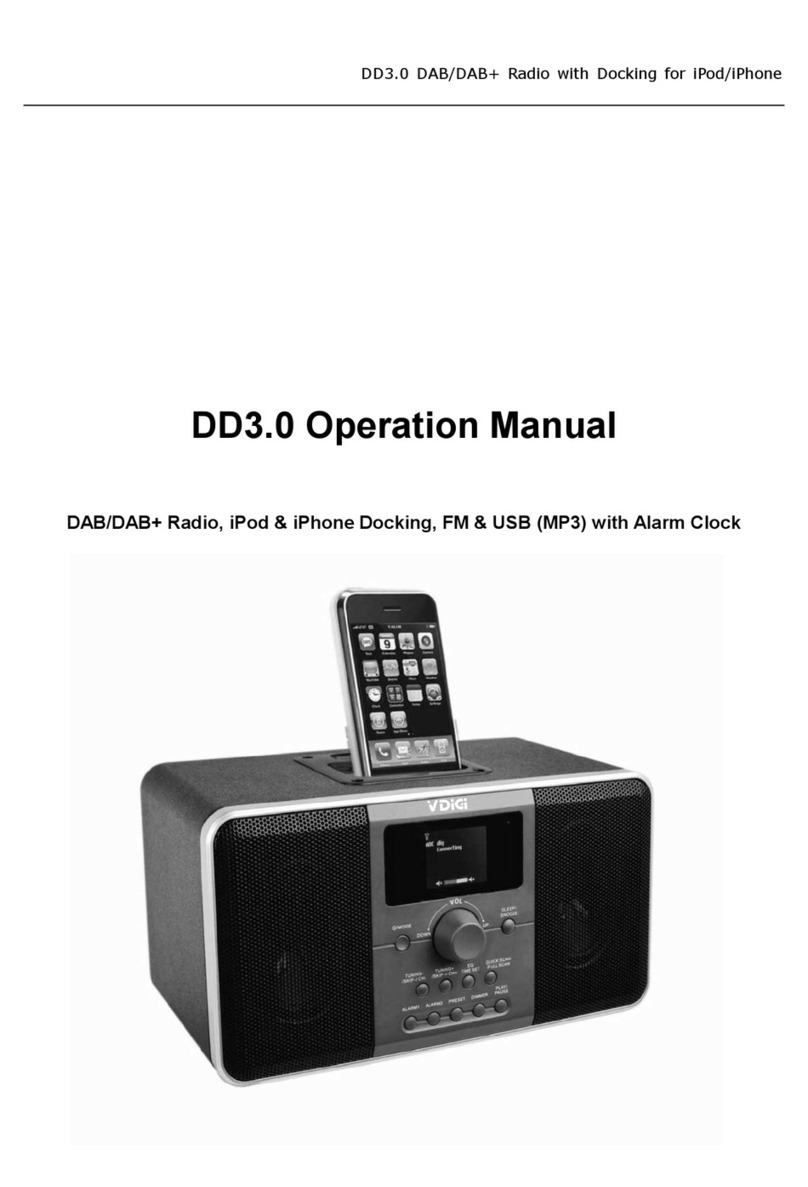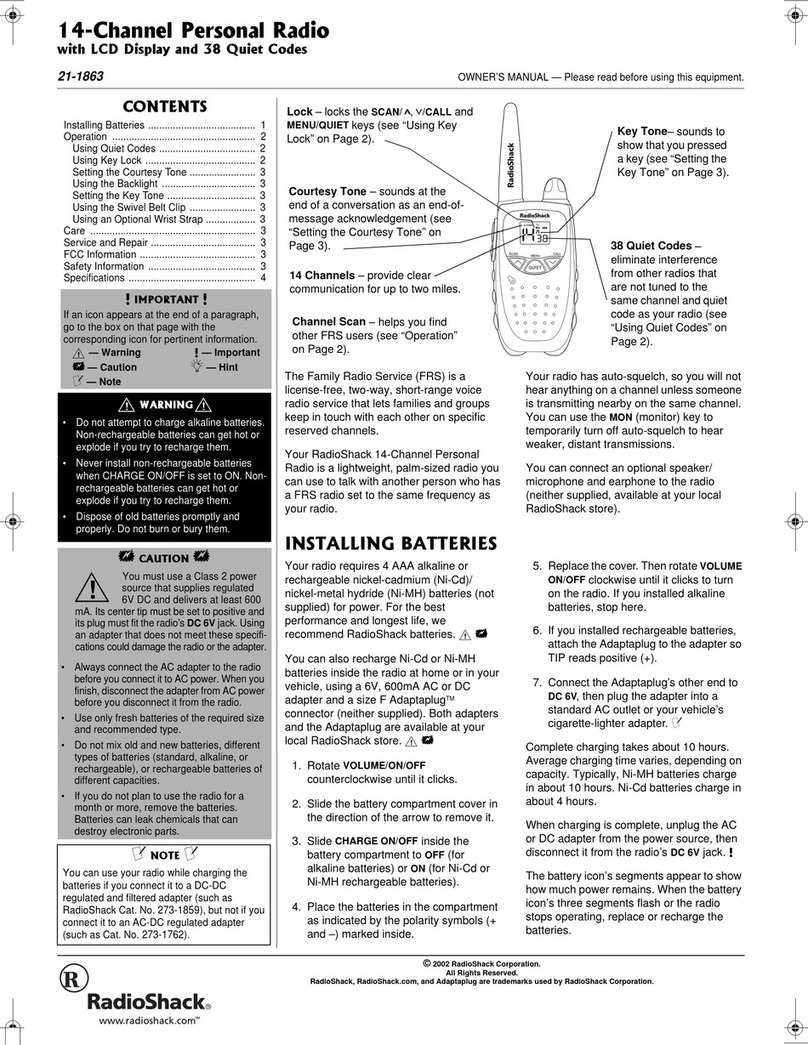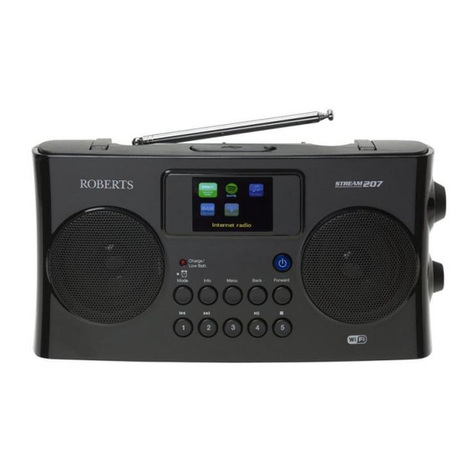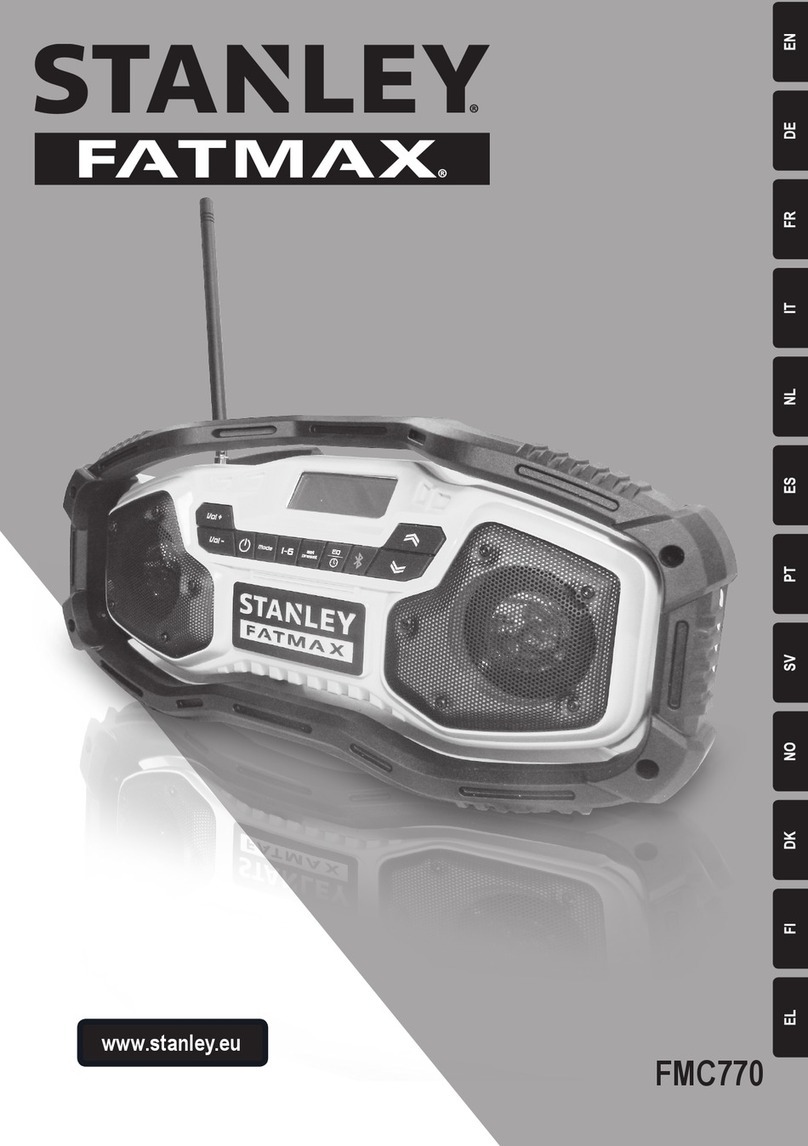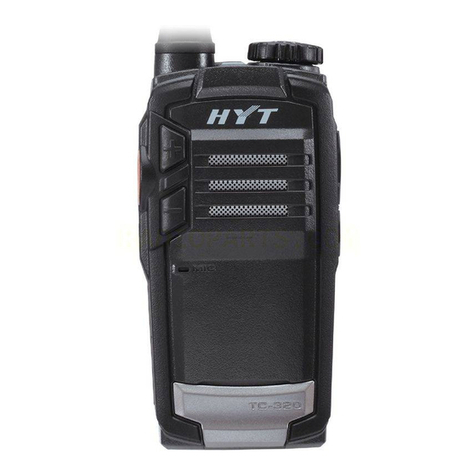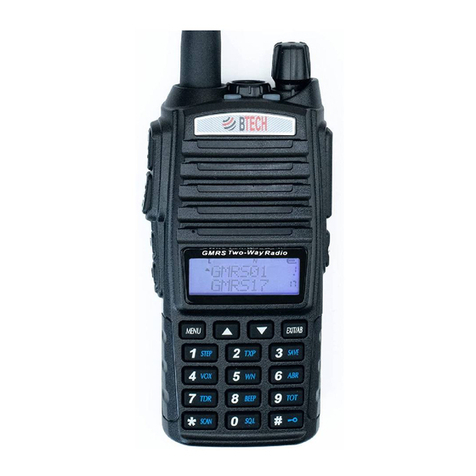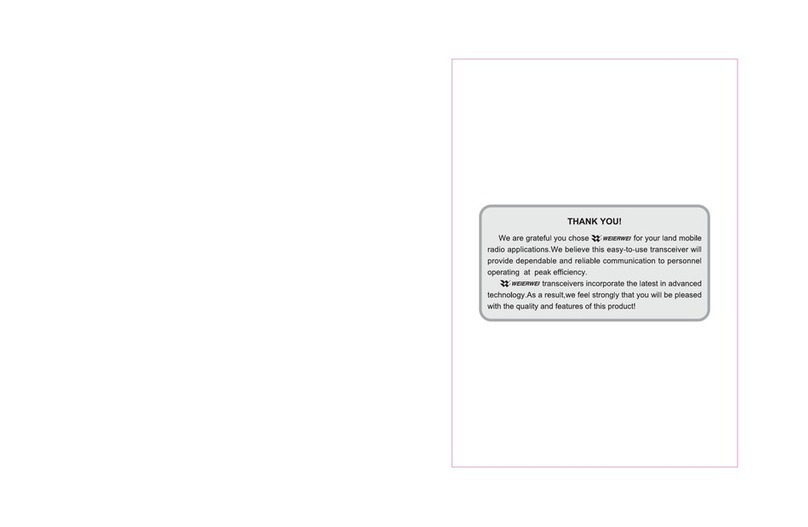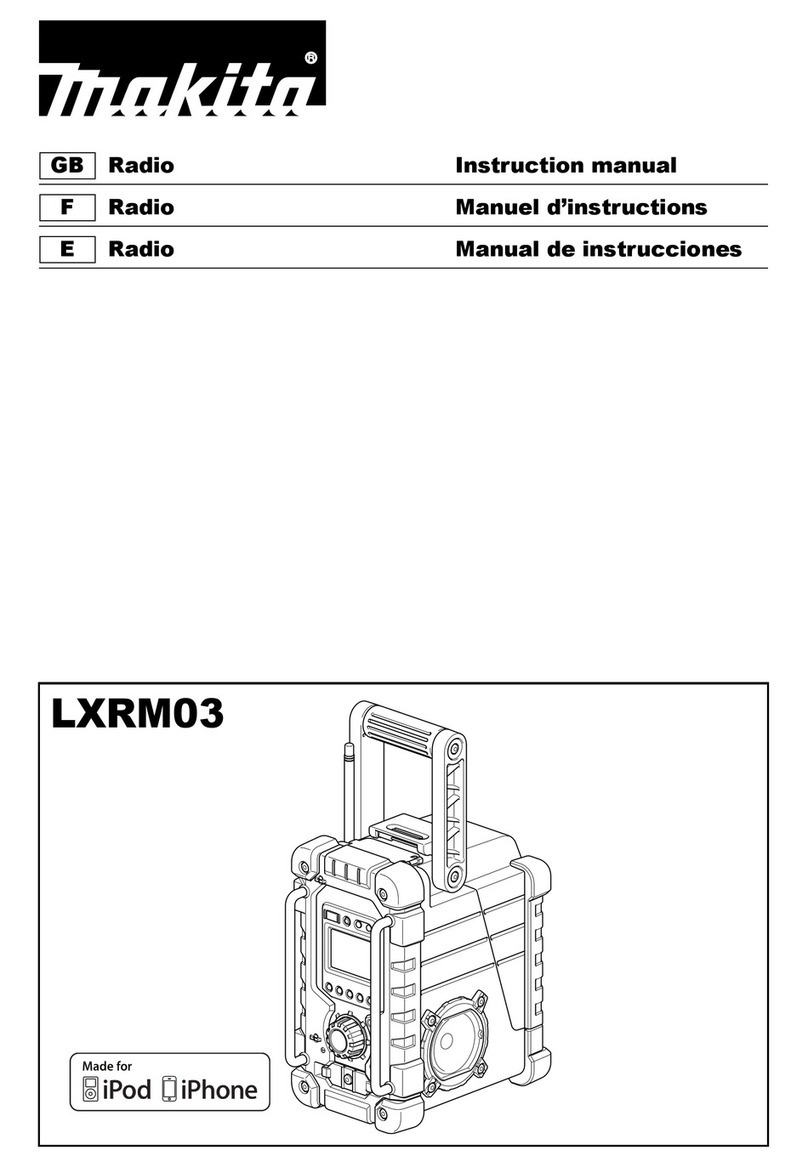4
V. Installation Sa eguards
WARNING - DO NOT install the radio unit where it will interfere with the
proper operation of automatic collision protection devices (air
bags).
WARNING - DO NOT install the radio unit where it is likel to cause injur in
case of an accident.
Note: This radio is NOT intended for operation in a positive ground vehicle.
A. Select a location for the radio where ou will be able to easil see and
reach all the controls and the microphone.
B. Using the radio mounting bracket as a template, mark with a pencil the
locations where the bracket securing screws will be placed.
Note: Before drilling holes in the vehicle, verif that there is nothing that could
be damaged or get in the wa b drilling and putting screws in this location. It is
better to use existing passages in the dashboard, trunk, and floor for routing
the cable, thus avoiding excessive drilling and possible damage.
C. After drilling holes for the mounting bracket, attach the bracket to the
mounting surface b using the two (2) large Phillips head screws
provided.
D. Attach the radio to the mounting bracket using the black screw knobs
(located on each side of the radio) along with the two (2) spring-lock
washers and two (2) large flat washers provided. If necessar , connect
the power suppl cord for the radio before mounting the radio to the
bracket.
Note: Depending on the radio mounting location, it ma be more convenient
to attach the microphone bracket to the radio before installing the radio.
E. Using the two (2) small Phillips head screws provided, mount the micro-
phonebracket to the side of the radio. There are two options for
installing the microphone bracket, allowing the on-hook placement
of the microphone from either the top or the front of the bracket.
F. Push the modular microphone connector into the microphone jack
(located on the front of the radio) until ou hear a click.
CAUTION - Some electronic fuel injection, anti-lock braking s stems, cruise
controls, and vehicle alarms ma be subject to interference
from radio frequenc energ or ma malfunction due to a lack
of protection from RF energ . If the vehicle contains such equip-
ment, consult our radio communications Dealer for assistance
or advice in determining whether the electronic equipment in
the vehicle will operate properl when the radio is transmitting.
